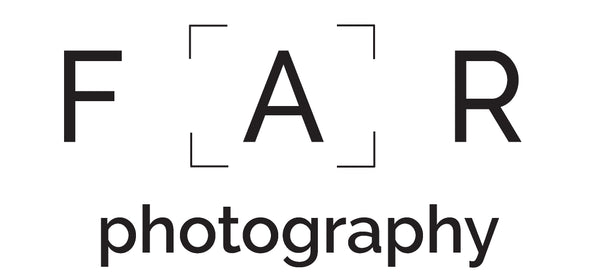DEPTH OF FIELD EXPLAINED
SAFE SETTING - f8 / ONE4LLOYDS = 3 f stops
Depth of field – This is how much the photograph is in focus.
It is measured in f stops.
It is simply explained as a hole that opens inside the camera and lets light in when you take a photo. This light then hits the cameras sensor, and records the image. The size of this hole varies from very large to very small as shown in the diagram below. The size of the hole that you select is measured in f numbers or f stops as it is commonly referred to. In simple terms it is a way of naming each hole size you select.
The confusing thing about aperture is the measurement. The reason for this is the f stops actually refer to fractions, not numbers. So f22 is actually the fraction 1/22 which is a pretty small fraction compared to f2 or 1/2 (i.e. half!) which is obviously quite big, hence f2 is a big hole. That is why when you refer to aperture you refer to it as big or small. It doesn't mean the f number is big or small, it means the actual opening is big or small. So f2.8 is a big hole, its a big aperture, Similarly a small aperture, is a small hole f22 (1/22 small tiny little fraction).
Now what about the phrase "depth of field", well that means the actual area in focus. The depth of the image that you can see. The depth of focus in your picture. So a big depth of field would mean a large area in focus and a small depth of field would mean a small part of the picture in focus.
So how do we summarise that - Quite simply they are opposite.
A LARGE APERTURE (f2.8) = A SMALL DEPTH OF FIELD (shallow focus)
&
A SMALL APERTURE (f22) = A LARGE DEPTH OF FIELD (deep focus)
Graphic courtesy of dailyphotography.com
Depth of Field in action
Image Source: Joe Pyle Photography, Depth of Field
What you need to decide about f stops is "how much of my picture do I want in focus?... a lot? all of it? or just a part of the image? perhaps one part of a subject letting the rest become blurred?"
Start with your extremes - f22 is a big number, so you are going to get a big amount of focus throughout your picture. f8 is pretty much your half way point and usually my safe point when I'm not sure. This will give you a very even spread of focus throughout the middle section of the your image and incorporate some foreground and background. Similarly f2.8 is a small number and will only give you a very small area of the overall image that is in focus eg. on a close up of a dogs face, the nose will be in focus but not the eyes.
And how do I select the right aperture? How do I know what f stop number to choose? Well my very best advise is this - practice and review. This is probably one of the most challenging questions for a photographer, what aperture to select. Don't be afraid to experiment. Take a photo, then stop and take the time to check it. Don't just look at it in the viewfinder window, zoom in to the picture, look around the shot and see what's in focus and what's not. If you don't have time then hedge your bets. Take the same shot using 3 different sequential apertures f2.8, f4 & f5.6 - make sure you check these images on your computer when you get home. See what the difference is. This is often my One4Lloyds - 3 f stops just to be sure I have the right one in the bank.
My happy place, when it comes to Aperture, is f8. It’s a safe bet, it’s a middle ground, it’s a good hedging bet, in case other variables or choices don’t work out. Sometimes I even start from my safe setting and figure out the shot from there. More often than not I find the perfect shot is not always the one I choose in post. If you always take one for Lloyds you'll always have options. Try to get into the habit. Remember, One4Lloyds doesn't mean taking that same shot again, it means changing some variables and reshooting the picture.

